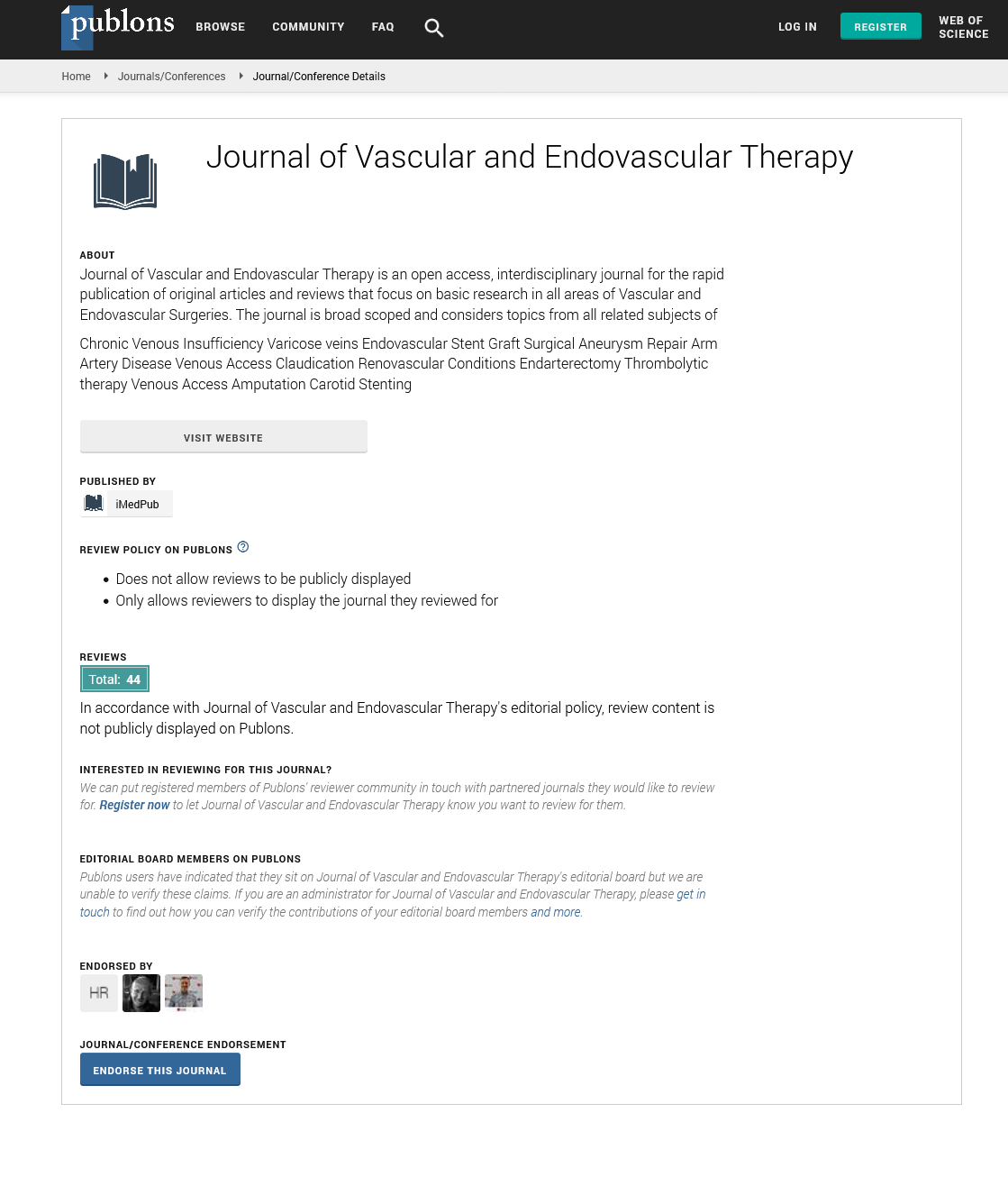Abstract
The Natural History of Type 2 Endoleaks after EVAR Justifies Conservative Management
Objective: Management of type 2 endoleaks (T2Ls) after endovascular aneurysm repair (EVAR) has been controversial. Some advocate for conservative management, while others believe that intervention is indicated. This study investigated the natural history of T2Ls in order to derive direction in management.
Methods: Patients who had EVAR at the Long Beach VA were retrospectively identified and computerized tomographic angiography (CTA) was independently reviewed by a radiologist and a vascular surgeon. T2Ls were analyzed for the following outcomes: rupture, duration of endoleak, spontaneous resolution, changes in the size of the aneurysm sac, and reintervention rates.
Results: Of the 160 patients who had completed required followup to date (mean 3 years) after EVAR, 39 patients (24.4%) were identified as having a T2L on CTA imaging. 6 of these 39 patients (15.4%) required repair due to aneurysm sac growth >1 cm. Two (5.13%) were repaired with an open procedure and 4 (10.3%) with an endovascular approach. Of these 6 aneurysm leaks requiring repair, 4 (66.7%) had a simultaneous endoleak (types 1 or 3) in addition to the identified T2L. Spontaneous resolution of T2Ls occurred in 16 (41.0%) patients.
Conclusions: Overall, we found that 85% of patients who had T2Ls did not require intervention after a mean follow up time of 3 years. The association of a type 1 or 3 endoleak with a T2L was more likely to require correction due to aneurysm expansion >1 cm, thus T2Ls associated with another type of endoleak require more aggressive management.
Author(s):
Mark Ajalata, Russell A Williamsa and Samuel E Wilsona
Abstract | Full-Text | PDF
Share this

Google scholar citation report
Citations : 177
Journal of Vascular and Endovascular Therapy received 177 citations as per google scholar report
Journal of Vascular and Endovascular Therapy peer review process verified at publons
Abstracted/Indexed in
- Google Scholar
- Publons
- Geneva Foundation for Medical Education and Research
- Secret Search Engine Labs
Open Access Journals
- Aquaculture & Veterinary Science
- Chemistry & Chemical Sciences
- Clinical Sciences
- Engineering
- General Science
- Genetics & Molecular Biology
- Health Care & Nursing
- Immunology & Microbiology
- Materials Science
- Mathematics & Physics
- Medical Sciences
- Neurology & Psychiatry
- Oncology & Cancer Science
- Pharmaceutical Sciences


